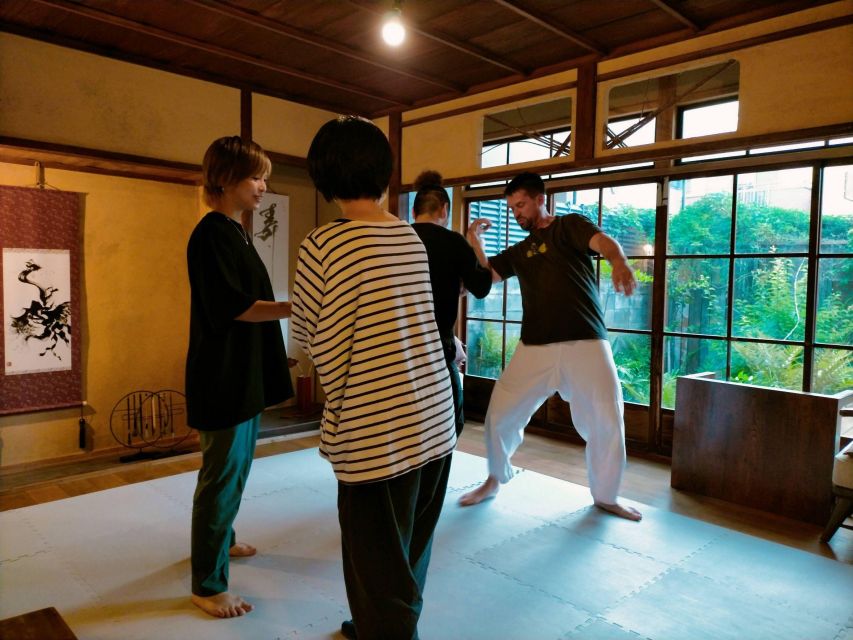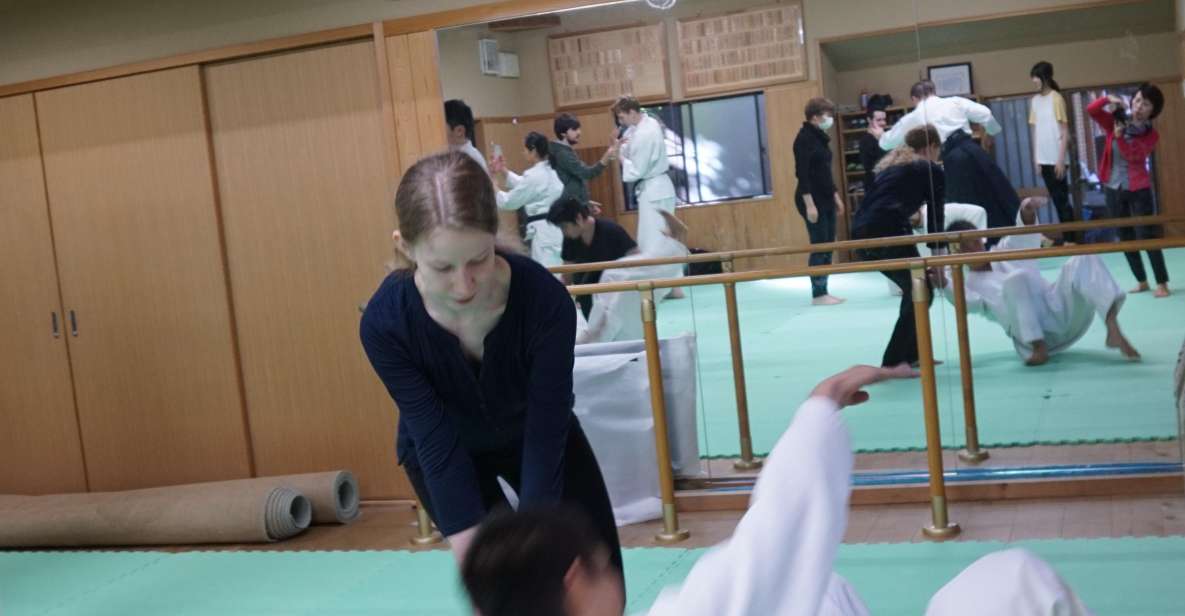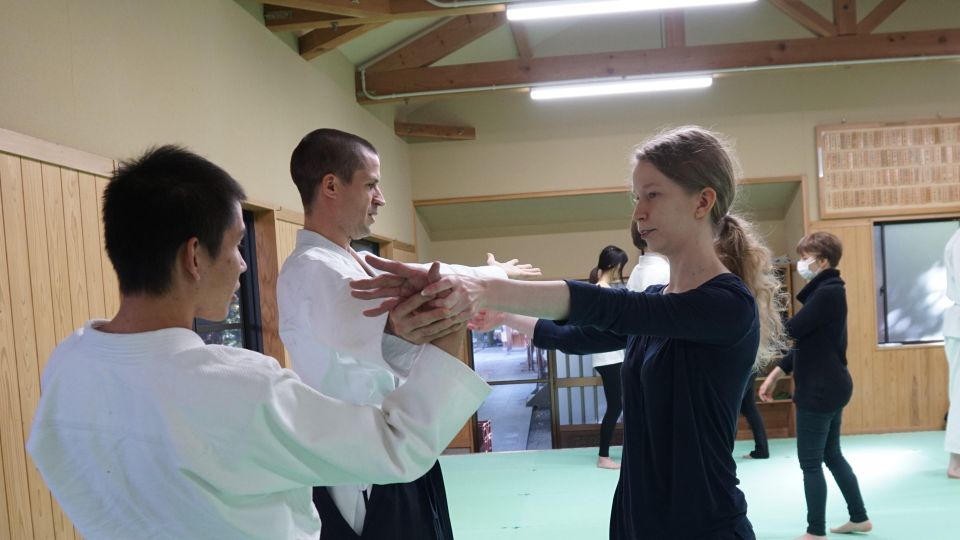Aikido is a Japanese martial art that’s unlike any other. It’s all about harmony, not aggression. Practitioners don’t meet force with force – instead, they redirect an attacker’s energy using fluid movements and throws. It’s a unique approach that promotes personal growth and inner calm. But there’s a lot more to Aikido than meets the eye. From its fascinating origins to the intriguing philosophies that guide it, this gentle yet powerful art has a lot to offer those willing to explore its depths.
Key Points

-
Aikido is a Japanese martial art that emphasizes harmony, redirection of an attacker’s force, and the use of minimal strength to neutralize threats.
-
Developed in the early 20th century, Aikido’s techniques are influenced by various traditional Japanese fighting styles, including jujitsu and judo.
-
Aikido philosophy encourages a peaceful resolution of conflicts, with a focus on personal growth, spiritual development, and nonviolence over pure combat.
-
Aikido training involves the practice of flowing movements, joint locks, and throws, aimed at improving balance, awareness, and control.
-
Aikido has several distinct styles, allowing practitioners to explore the art’s versatility and find an approach that suits their individual goals and preferences.
It's also worth checking out some other tours and experiences nearby.
Principles of Aikido
What Is Aikido? (An Introduction to the Japanese Martial Art)
Principles of Aikido
Aikido emphasizes three core principles: balance, harmony, and redirection.
By understanding and practicing these principles, practitioners can learn to respond to attacks with fluid, graceful movements that diffuse confrontation.
Balance is critical in Aikido, allowing the practitioner to maintain their center of gravity and remain stable even when their opponent tries to knock them off balance.
Harmony involves blending and moving with the energy of an attack, rather than meeting it with force.
Redirection uses that energy to turn the attack back on the aggressor.
Through these principles, Aikido teaches students to resolve conflicts peacefully and use only the minimum amount of force necessary.
History and Origins

Aikido’s origins trace back to the early 20th century in Japan, where it developed from the teachings and techniques of several prominent martial arts masters. Ueshiba’s martial arts knowledge was synthesized into Aikido in the 1920s and 1930s.
Aikido’s founder, Morihei Ueshiba, was greatly influenced by his study of jujitsu, judo, and other traditional Japanese fighting styles. He sought to create a martial art that emphasized spiritual development and nonviolence over pure combat.
Aikido’s techniques aim to redirect an opponent’s energy rather than meet force with force. The name ‘Aikido’ translates to ‘the way of harmonious spirit.’
Ueshiba’s spiritual and pacifist philosophy were central to the creation of Aikido.
Aikido Techniques

While Aikido’s origins trace back to early 20th century Japan, its techniques are what set it apart as a unique martial art. Practitioners use their opponent’s own momentum and force against them, deflecting and redirecting attacks through a series of fluid movements and throws.
This allows Aikido practitioners to neutralize threats with minimal use of strength or aggression.
Some of the core Aikido techniques include joint locks, which manipulate the joints to control an attacker, and throws, which use the opponent’s energy to off-balance and topple them. Aikido also utilizes footwork and circular movements to maintain stability and positioning.
Benefits of Aikido
Beyond its practical self-defense applications, Aikido offers practitioners a range of benefits that extend into everyday life.
Through the study of this martial art, students can develop:
- Heightened body awareness and control
- Improved balance, flexibility, and coordination
- Enhanced focus, concentration, and stress management
- A greater sense of personal peace and inner calm
Aikido’s emphasis on redirecting an opponent’s energy, rather than meeting force with force, encourages practitioners to approach challenges in a more centered, harmonious way. This mindset can translate to various aspects of one’s personal and professional life, making Aikido a valuable practice if you’re after physical, mental, and spiritual growth.
Aikido Philosophy
At the heart of Aikido lies a philosophy that emphasizes the harmonious resolution of conflict through non-resistance and the redirection of an opponent’s energy.
Aikido’s founder, Morihei Ueshiba, believed that the true purpose of martial arts was to cultivate peace and reconciliation, not to defeat or harm others. This philosophy is reflected in Aikido’s techniques, which focus on blending with an attacker’s movements and using their own force against them, rather than meeting force with force.
Aikido Training
Aikido training emphasizes the development of physical and mental discipline through the practice of flowing movements, joint locks, and throws. Practitioners learn to redirect an attacker’s force through precise body positioning and timing, cultivating a sense of balance, awareness, and control. Rather than relying on muscular strength, Aikido techniques leverage the efficient use of energy and leverage to neutralize threats.
The core elements of Aikido training include:
- Ukemi: The art of receiving and falling safely during techniques
- Waza: The specific Aikido techniques and their application
- Kihon: The fundamental movements and postures
- Kata: The pre-arranged forms and sequences
Through diligent practice, Aikido students develop a deep understanding of the art’s principles, which can then be applied in both self-defense situations and everyday life.
Aikido Styles
While Aikido training emphasizes universal principles, different styles have emerged that emphasize unique techniques and approaches.
The most prominent Aikido styles include Aikikai, Yoshinkan, and Shodokan, each with its own philosophical underpinnings and teaching methodologies.
The Aikikai style, founded by Morihei Ueshiba, is the largest and most widely practiced, focusing on harmonious movements and spiritual development.
Yoshinkan Aikido, developed by Gozo Shioda, is known for its more rigid and structured techniques.
Shodokan Aikido, created by Kenji Tomiki, incorporates competitive elements and sparring.
These distinct styles allow practitioners to explore Aikido’s versatility and find the approach that best suits their individual goals and preferences.
Aikido in Practice
Practitioners of Aikido find the martial art’s emphasis on fluid movements and off-balance techniques to be both physically and mentally engaging.
In an Aikido practice session, students learn to:
- Redirect an attacker’s force rather than meeting it with strength
- Blend with an opponent’s motion and take them off-balance
- Maintain a centered, upright posture throughout techniques
- Apply joint locks and throws with control and precision
Through regular training, Aikido practitioners develop heightened awareness, agility, and self-control.
The martial art’s founder, Morihei Ueshiba, emphasized the importance of harmonizing with one’s opponent rather than dominating them. This ‘peaceful warrior’ philosophy is a core tenet of Aikido and shapes its practice on the mat.
Here's a few more nearby tours and experiences we think you'll like.
Frequently Asked Questions
Is Aikido Suitable for Self-Defense Against Multiple Attackers?
Aikido can be effective for self-defense against multiple attackers, as its techniques focus on redirecting and blending with an opponent’s energy. However, it may require more advanced practice to effectively handle multiple assailants simultaneously.
Can I Learn Aikido if I Have Physical Limitations or Disabilities?
Yes, folks with physical limitations or disabilities can certainly learn Aikido. The art emphasizes using your opponent’s energy, so it’s adaptable to individual needs. An experienced instructor can tailor the training to accommodate various abilities.
How Long Does It Typically Take to Earn an Aikido Black Belt?
It typically takes 5-10 years of dedicated practice to earn an Aikido black belt. The exact time can vary based on an individual’s commitment, talent, and training frequency. Many factors influence the path to this milestone in the Aikido journey.
Is Aikido an Effective Martial Art for Street Self-Defense?
Aikido can be effective for street self-defense, though it’s primarily focused on redirecting an attacker’s energy rather than striking. Its techniques emphasize balance, timing, and control rather than brute force, making it a practical option for smaller or less physically strong practitioners.
Can Aikido Techniques Be Used to Disarm an Armed Attacker?
Aikido techniques can be used to disarm an armed attacker by redirecting their momentum and using their own force against them. However, it requires extensive training and may not be suitable for all self-defense situations.
Not for you? Here's more of our most recent tour reviews happening neaby
- Kyoto: Machiya House Photo Shoot and Kimono Rental
- Geisha Performance & Gion District Walking Tour
- Kyoto Best Spots Private Tour With Licensed Guide (4h/6h)
- Kyoto Day Trip! Private Customizable Tour With Expert Guides
- Kyoto: Unscripted Walking Tours W/Locals 3h 5h 8h
- Kyoto Private Car Tour With Japanese&Local Guide
- Kyoto: Nighttime Zen Meditation and Matcha Tea Experience
- The Art of Geisha: Exclusive Show & Japanese Game
- Kyoto: Rent Kimono for a Day Near Gion W/ Photoshoot
- Discovery More Kyoto Gion Evening Food Tour
- 【Sado】※Tea Ceremony 12:30 P.M Discover the Authentic Kyoto
- 【Sado】※Tea Ceremony 11:30 A.M Discover the Authentic Kyoto
- 【Sado】※Tea Ceremony 13:30 P.M Discover the Authentic Kyoto
- 【NOHGAKU】🎶 Discover the Authentic Kyoto
- BNR NIGHT FARM
Recap
Aikido’s unique approach sets it apart from other martial arts. It emphasizes harmony, inner growth, and nonviolence, making it a distinctive tradition.
Through fluid techniques, practitioners cultivate balance, awareness, and control, promoting personal development and inner calm.
Aikido’s principles of redirection and peaceful conflict resolution continue to captivate both students and enthusiasts worldwide.
